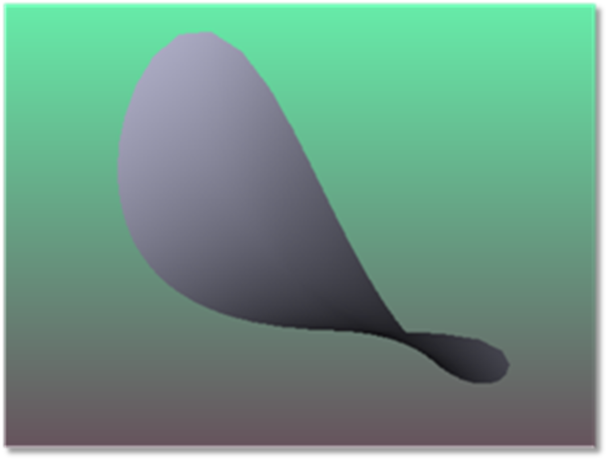Biconic Surface

A biconic surface is similar to a toroidal surface, except the conic constant and base radius may be different in the X and Y directions. The biconic surface allows specification of Rx, Ry, Kx, and Ky directly. The sag of a biconic is given by:
Where
and
The biconic surface is defined by 13 parameters:
| Parameter # | Description | Face Name | Face # |
| 1 | The base radius of curvature in the XZ plane. If this value is zero, then the XZ curvature is assumed to be zero. | All Faces | 0 |
| 2 | The base radius of curvature in the YZ plane. If this value is zero, then the YZ curvature is assumed to be zero. | All Faces | 0 |
| 3 | The X direction conic. | All Faces | 0 |
| 4 | The Y direction conic. | All Faces | 0 |
| 5-6 | The maximum X/Y aperture in lens units. | All Faces | 0 |
| 7-8 | The minimum X/Y aperture in lens units. These parameters are ignored if the "Is Rectangle?" parameter is zero. | All Faces | 0 |
| 9-10 | Unused. | All Faces | 0 |
| 11 | The "Is Rectangle?" flag. If zero, the resulting surface shape will have an elliptical boundary. If non-zero, the surface will have a rectangular boundary. | All Faces | 0 |
| 12 | The "Is Top Hyper?" flag. If zero, the maximum Y aperture will lie on the non-hyperhemispheric portion of the surface. If non-zero, the maximum Y aperture of the surface will be hyperhemispheric. This parameter is ignored if the "Is Rectangle?" parameter is zero, if the Y direction conic is less than or equal to -1.0, if the maximum Y aperture is less than zero, or if the XZ base radius is non-zero. | All Faces | 0 |
| 13 | The "Is Bot Hyper?" flag. If zero, the minimum Y aperture will lie on the non-hyperhemispheric portion of the surface. If non-zero, the minimum Y aperture of the surface will be hyperhemispheric. This parameter is ignored if the surface is elliptical, if the Y direction conic is less than or equal to -1.0, if the minimum Y aperture is greater than zero, or if the XZ base radius is non-zero. | All Faces | 0 |
Next:


